Pronunciation /ˈsaɪkiː/ SY-kee Minor planet category Main belt Orbital period 1,823 days | Discovery date 17 March 1852 Alternative names none Aphelion 3.328 AU (497.884 Gm) Discovered 17 March 1852 Orbits Sun Named after Cupid and Psyche | |
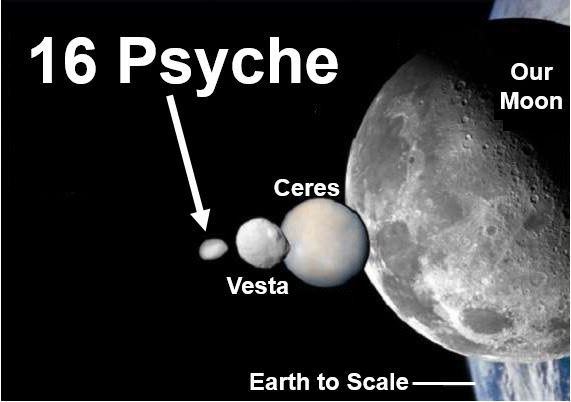 | ||
Similar Annibale de Gasparis discoveries, Other celestial objects | ||
16 Psyche is one of the ten most-massive asteroids in the asteroid belt. It is over 200 kilometers in diameter and contains a little less than 1% of the mass of the entire asteroid belt. It is thought to be the exposed iron core of a protoplanet. It is the most massive metallic M-type asteroid. Psyche was discovered by the Italian astronomer Annibale de Gasparis on 17 March 1852 from Naples and named after the Greek mythological figure Psyche.
Contents
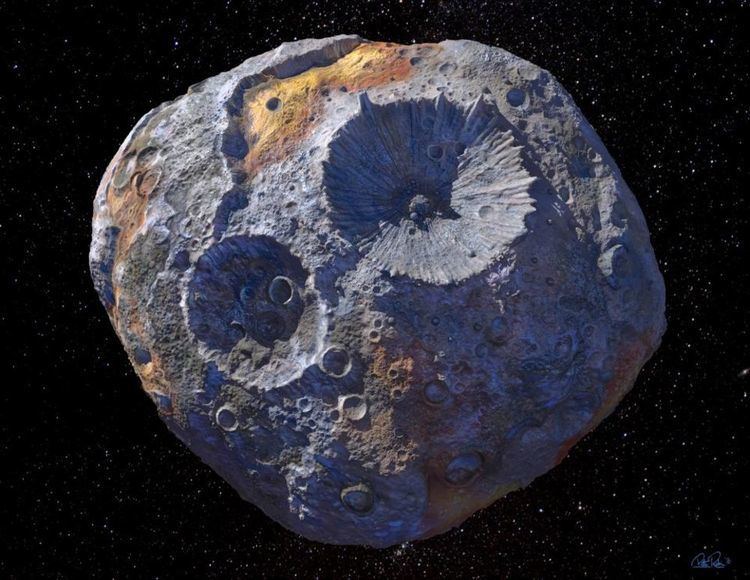
Symbol
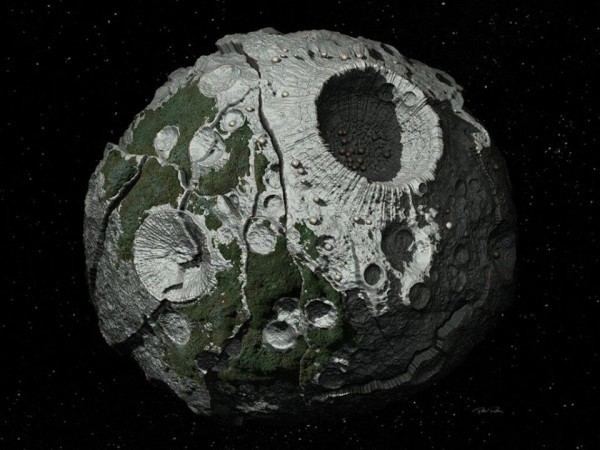
The first fifteen asteroids to be discovered were given symbols by astronomers as a type of shorthand notation. Psyche was given an iconic symbol, as were several other asteroids discovered over the next few years. This symbol , a semicircle topped by a star, represents a butterfly's wing, symbol of the soul (psyche is the Greek word for 'soul'), and a star. In 1851, German astronomer J. F. Encke suggested using a circled number, and 16 Psyche was the first new asteroid to be discovered that was designated using this scheme when American astronomer J. Ferguson published his observations in 1852.
Characteristics
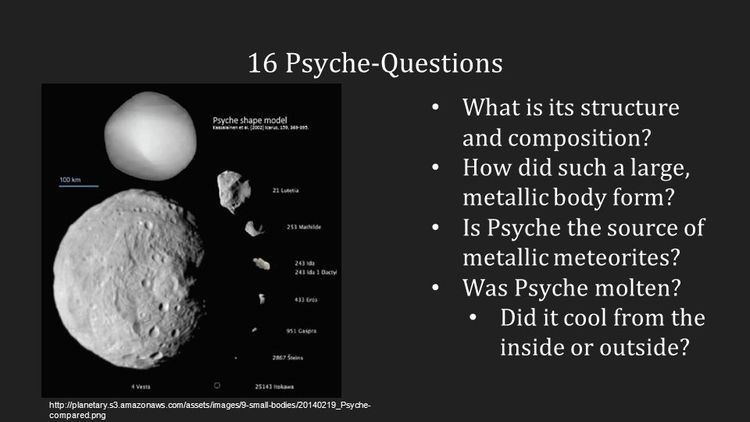
Radar observations indicate that Psyche has a fairly pure iron–nickel composition, consistent with it having the highest radar albedo of any asteroid in the asteroid belt (6999290000000000000♠0.29±0.11). Psyche seems to have a surface that is 90% metallic (iron), with small amounts of pyroxene.
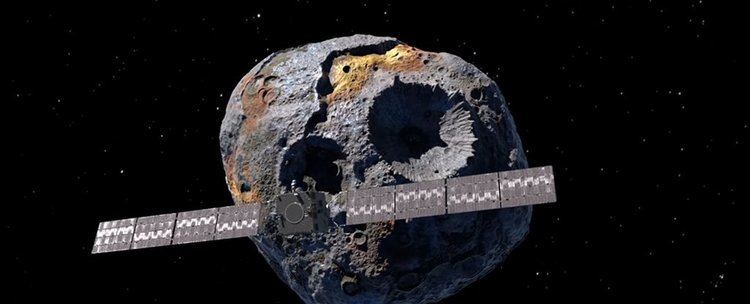
Therefore, Psyche appears to be an exposed metallic core from a larger differentiated parent body some 500 kilometers in diameter. If Psyche is indeed one, there could be other asteroids on similar orbits. However, Psyche is not part of any identified asteroid family. One hypothesis is that the collision that formed Psyche occurred very early in the Solar System's history, and all the other remnants have since been ground into fragments by subsequent collisions or had their orbits perturbed beyond recognition. However, this scenario is considered to have a probability of just 1%. An alternative is that Psyche was broken by impacts, but not catastrophically torn apart. In this case, it may be a candidate for the parent body of the mesosiderites, a class of stony–iron meteorites.

Psyche is massive enough that its gravitational perturbations on other asteroids can be observed, which enables a mass measurement. IRAS data shows it to have a diameter of 253 km, whereas observations of an occultation in 2004 that provided five cross-sectional chords suggest an outline of 214×181 km. Further estimates in 2006 and 2011 that also suggested a smaller size have resulted in an increase in its estimated density to one that is more appropriate for a metallic asteroid. Psyche appears to have a fairly regular surface and is approximately ellipsoidal in shape. Light-curve analysis has indicated that Psyche's pole points towards either ecliptic coordinates (β, λ) = (−9°, 35°) or (β, λ) = (−2°, 215°) with a 10° uncertainty. This gives an axial tilt of 95°.
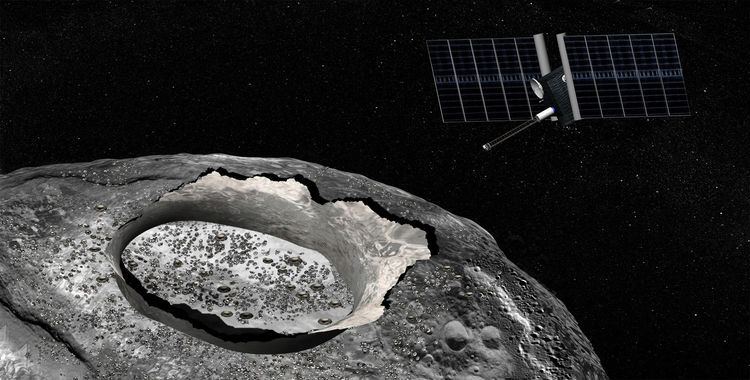
It is possible that at least some examples of enstatite chondrite meteorites originated from this asteroid, based on similar spectral analysis results.
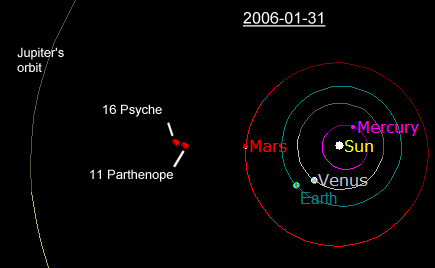
The NASA Infrared Telescope Facility at the Mauna Kea Observatories released evidence of the presence of water or hydroxyl ions on the asteroid in October 2016. The water is believed to have reached Psyche via past impacts from smaller asteroids containing volatile substances such as carbon, hydrogen and water.
Exploration
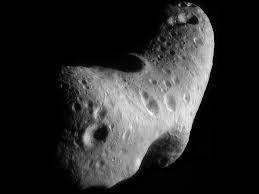
No spacecraft has visited Psyche, but in 2014 a mission to Psyche was proposed to NASA. A team led by Lindy Elkins-Tanton, the director of the School for Earth and Space Exploration at Arizona State University, presented a concept for a robotic Psyche orbiter. This team argued that 16 Psyche would be a valuable object for study because it is the only metallic core-like body discovered so far.
The spacecraft would orbit Psyche for six months, studying its topography, surface features, gravity, magnetism, and other characteristics and would be based on current technology, avoiding high cost and the necessity to develop new technologies. On September 30, 2015, the Psyche orbiter mission was one of five Discovery Program semifinalist proposals.
The mission was approved by NASA on January 4, 2017 and is targeted to launch in October of 2023, arriving at the asteroid in 2030, following an Earth gravity assist spacecraft maneuver in 2024 and a Mars flyby in 2025.
